Building Your First AI Model: A Step-by-Step Guide
Learn how to build your first AI model with this step-by-step guide! From defining your problem and gathering data to training, evaluating, and deploying your model, this guide covers everything you need to know to start your AI journey.
Israel Sylvain
8/24/20244 min read
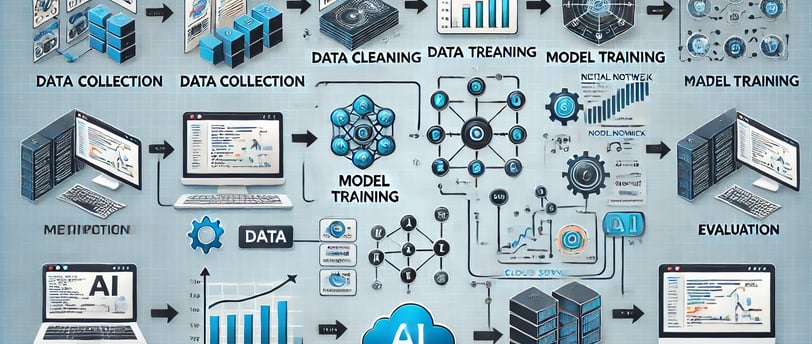

Building Your First AI Model: A Step-by-Step Guide
Artificial intelligence (AI) is no longer just a concept confined to sci-fi movies and tech giants. Today, AI is becoming increasingly accessible, allowing businesses, researchers, and hobbyists to build their own models to solve real-world problems. Whether you're looking to automate a process, analyze large datasets, or create a recommendation engine, building an AI model can be a game-changer.
In this step-by-step guide, we'll walk you through the process of building your first AI model, from understanding the basics to deploying a functional model. Whether you’re a beginner or have some experience, this guide will help you navigate the complexities of AI and get you started on your journey.
Understanding the Basics: What is an AI Model?
Before diving into the steps of building an AI model, it's essential to understand what an AI model is. At its core, an AI model is a mathematical representation of a process that makes decisions or predictions based on data.
Types of AI Models
AI models can be broadly categorized into three types:
Supervised Learning: The model learns from labeled data (i.e., input-output pairs) to make predictions. Common applications include spam detection, sentiment analysis, and image recognition.
Unsupervised Learning: The model finds patterns and relationships in unlabeled data. This type is often used for clustering, anomaly detection, and market segmentation.
Reinforcement Learning: The model learns by interacting with an environment and receiving feedback in the form of rewards or penalties. It’s commonly used in robotics, game playing, and self-driving cars.
Step-by-Step Guide to Building Your First AI Model
Now, let’s dive into the process of building your first AI model. We’ll use a simple supervised learning problem: predicting house prices based on features like size, number of rooms, and location.
Step 1: Define the Problem and Goal
The first step in building any AI model is to clearly define the problem you're trying to solve and the goal you want to achieve.
Problem: Predict the price of a house based on various features.
Goal: Create a model that accurately predicts house prices to help homeowners, real estate agents, and buyers make informed decisions.
Step 2: Gather and Prepare the Data
AI models learn from data, so having high-quality data is crucial. In our case, we need historical data on house sales, including features like size, number of rooms, location, and the sale price.
a. Data Collection:
Public Datasets: There are many publicly available datasets, such as the Boston Housing Dataset or Zillow's housing data, which can be used for training your model.
Custom Data: If you have access to specific data (e.g., from a real estate agency), you can use that to create a more tailored model.
b. Data Cleaning:
Once you have your data, the next step is to clean it. This involves removing duplicates, handling missing values, and correcting any errors.
Handling Missing Values: Use methods like mean imputation, median imputation, or remove rows/columns with too many missing values.
Encoding Categorical Variables: Convert categorical variables (like location) into numerical values using techniques such as one-hot encoding.
c. Data Splitting:
Split the dataset into training and test sets. The training set is used to train the model, while the test set is used to evaluate its performance.
Step 3: Choose the Right Model
Selecting the right model depends on the problem you're solving and the type of data you have. For predicting house prices, a regression model would be appropriate.
Linear Regression: A simple yet powerful algorithm for predicting continuous values.
Decision Trees and Random Forests: These models can capture more complex relationships between features and the target variable.
Step 4: Train the Model
Training the model involves feeding the training data into the model and allowing it to learn the relationships between the features and the target variable.
Step 5: Evaluate the Model
After training, it's crucial to evaluate the model to see how well it performs on unseen data. Use the test set to assess the model's accuracy and identify any potential overfitting or underfitting.
Mean Squared Error (MSE): A common metric for regression problems. It measures the average squared difference between the predicted and actual values.
Step 6: Optimize the Model
If the model’s performance is not satisfactory, consider optimizing it by tuning hyperparameters, selecting different features, or using more advanced algorithms.
a. Hyperparameter Tuning:
Use techniques like Grid Search or Random Search to find the best hyperparameters for your model.
b. Feature Engineering:
Improve your model by creating new features from the existing data or transforming features to better represent the underlying patterns.
Step 7: Deploy the Model
Once you're satisfied with your model's performance, the next step is to deploy it so that others can use it. Deployment can be as simple as running your model on a local machine or integrating it into a web application or mobile app.
Flask/Django: Use these Python web frameworks to create an API endpoint that accepts data and returns predictions.
Cloud Platforms: Deploy your model to cloud services like AWS, Google Cloud, or Azure for scalability and accessibility.
Step 8: Monitor and Maintain the Model
AI models are not set-it-and-forget-it solutions. They require ongoing monitoring and maintenance to ensure they continue to perform well.
Model Drift: Regularly retrain your model with new data to account for changes in the underlying patterns.
Performance Monitoring: Continuously monitor the model’s predictions and accuracy. Use tools like MLflow or TensorBoard to track performance metrics.
Step 9: Document and Share Your Work
Documenting your process and findings is crucial, especially if you are working in a team or plan to share your model with others.
Documentation: Include descriptions of your data, model choices, evaluation metrics, and any assumptions made.
Sharing: Consider sharing your model and code on platforms like GitHub or Kaggle to get feedback and collaborate with others.
Conclusion: Your Journey to Building AI Models
Building your first AI model is a significant milestone in your AI journey. By following these steps—defining the problem, gathering and preparing data, choosing and training a model, and deploying it—you can create powerful models that solve real-world problems.
As you gain more experience, you can explore more advanced techniques, such as deep learning, natural language processing, and reinforcement learning, to tackle even more complex challenges. Remember, the key to success in AI is continuous learning, experimentation, and a willingness to embrace new ideas and approaches.
So, roll up your sleeves and start building your first AI model today!
Python code snippet
Here are the images displaying the Python code snippet for importing a library and initializing a linear regression model using sci-kit-learn.
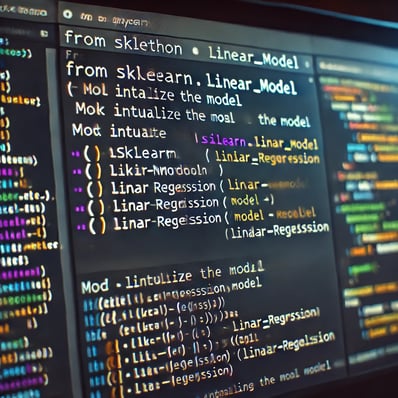
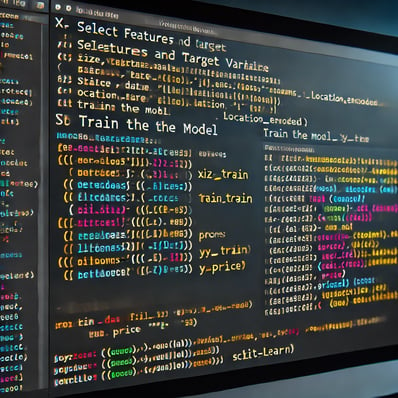
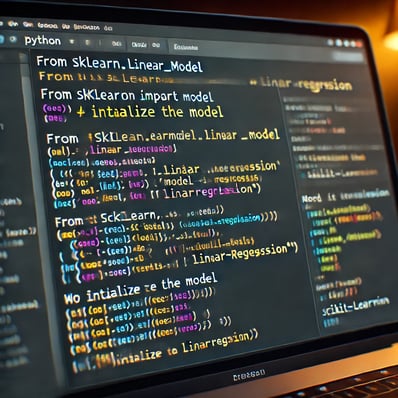
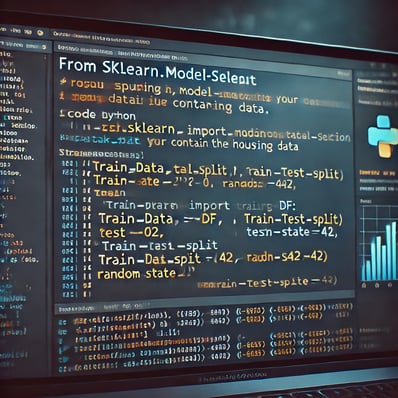
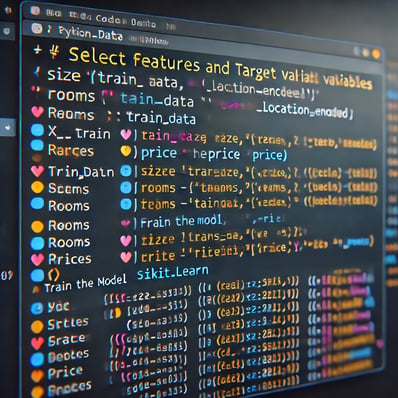
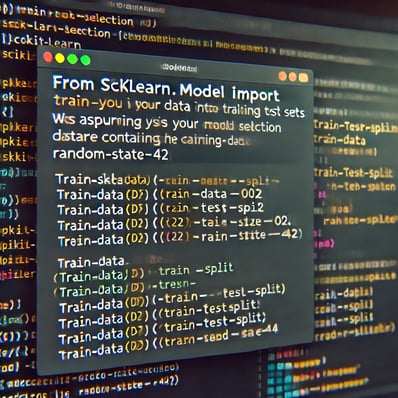






Connect With Us
Driven by commitment to excellence and unparalleled customer service
Contact Details
How can we help?
307-395-9154
Company
